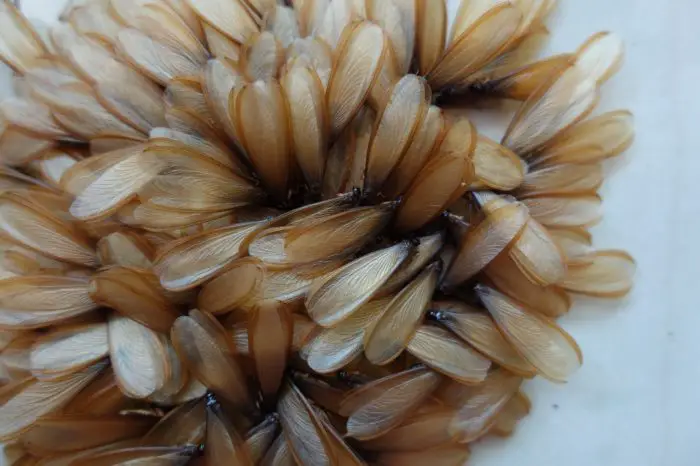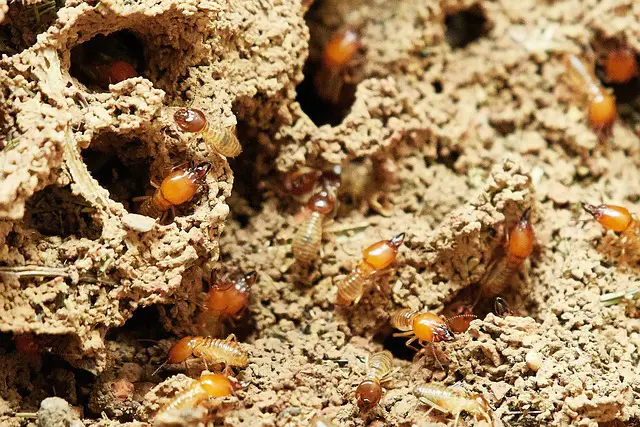Termites can be a homeowner’s worst nightmare, especially when they invade the kitchen cabinets. Not only they can cause extensive damage to the cabinets, but they can also spread to other areas of the home if left unchecked.
However, dealing with termites in kitchen cabinets can be a daunting task, leaving many homeowners with unanswered questions and concerns.
To provide clarity and expert advice on how to deal with termites in kitchen cabinets, we talked to Ed Carter, President of Enviro-Care Pest & Termite Contro, Inc.
In this article, we aim to address common questions and concerns related to termites in kitchen cabinets and provide practical solutions to deal with these pesky insects.
About Ed Carter
In 1995, Ed Carter founded Enviro-care Pest & Termite Control in Orange, California (USA). The company offers a diverse set of services, including pest, rodent, and termite control, wood repair, exclusion of pests and rodents, and sanitation services. With a degree in Chemical Engineering from Clarkson University, he has owned and operated several businesses since 1981.
How to Tell If There Are Termites in Kitchen Cabinets?
Termites can cause serious damage to wooden structures, including kitchen cabinets. If left unchecked, they can cause significant structural damage, making it essential to spot the signs of termite infestation as early as possible.
Droppings
Termites produce wood-colored droppings known as frass. According to Ed Carter, “The most common sign of termites are Termite droppings” Look for small, wood-colored pellets around the base of your kitchen cabinets.
Presence of Wings
The presence of discarded wings around your kitchen cabinets may indicate the presence of termites. Termites shed their wings after mating, so the wings will be scattered around the area.
Mud Tubes
Termites construct mud tubes, which they use to travel and protect themselves from predators. If you notice mud tubes running along the walls of your kitchen cabinets, it is a strong indication of termite infestation.
Hollow Sound
Tap on the surface of your kitchen cabinets, and if they sound hollow, it may indicate termite damage. Termites tend to eat away at the wood from the inside out, leaving a hollow space.
Swollen or Warped Wood
Termites feed on wood and other cellulose-based materials, and as they eat through the wood, they create tunnels and galleries that weaken the structural integrity of the wood. This can cause the wood to become swollen, warped, or distorted.
Discarded Swarmers
Swarmers are winged termites that leave their nests to mate and start new colonies. If you see discarded swarmers around your kitchen cabinets, it’s a sign of a mature termite infestation.

What Causes Termites in Kitchen Cabinets?
Termites are attracted to wood and other cellulose-based materials. Kitchen cabinets made of wood are particularly susceptible to termite infestation.
Moisture
Termites thrive in environments with high moisture levels. Leaky pipes, poor ventilation, or water damage can create a conducive environment for termites to infest your kitchen cabinets.
Cracks and Holes
Tiny cracks and holes in the walls or floors of your kitchen can provide access for termites to enter and infest your cabinets. They can also tunnel through cement or plaster to reach wooden structures.
Wood Quality
The type and quality of wood used in making your kitchen cabinets can also influence termite infestation. Softwood and older wood are more susceptible to termite attacks than hardwood or treated wood.
Proximity to Soil
Kitchen cabinets that are located close to the ground or soil can be more susceptible to termite infestation. Termites can easily enter through cracks in the foundation or crawl spaces and reach your cabinets.
Poor Maintenance
Neglecting your kitchen cabinets can make them more attractive to termites. Failure to seal cracks or holes, lack of regular cleaning, or ignoring water damage can create an ideal environment for termite infestation.
How to Get Rid of Termites in Kitchen Cabinets
Cardboard Traps
A cardboard trap is a common DIY method to detect the presence of termites.
- Take a few pieces of corrugated cardboard and wet them with water.
- Stack the wet cardboard pieces on top of each other and place them in an area where you suspect termite activity.
- Leave the cardboard trap undisturbed for a few days or up to a week.
- After a few days, check the cardboard for any signs of termite activity. Termites are attracted to the cellulose in the cardboard and will feed on it if they are present in the area. Look for signs of termite activity such as termite tunnels or fecal pellets.
Boric Acid
Boric acid is an effective treatment for termites. It works by dehydrating and damaging the termite’s digestive and nervous systems, leading to their death.
- Mix boric acid with a bait that termites like to eat, such as sugar or powdered milk. The recommended ratio is one part boric acid to two parts bait.
- Place the bait near areas of termite activity, such as mud tubes or damaged wood.
- Termites will be attracted to the bait and consume it, ingesting the boric acid in the process.
- Over time, the boric acid will spread throughout the termite colony, leading to its eventual collapse.
Orange Oil
Orange oil is a natural treatment option for termites. It contains a compound called d-limonene, which is toxic to termites and can kill them on contact.
- Drill small holes into the infested wood, about every 12 inches apart.
- Inject orange oil directly into the holes using a syringe or other application tool. The oil will spread through the wood, killing termites on contact.
- Repeat the application as necessary, usually every 3-6 months, until the infestation is eliminated.

Vinegar
Vinegar can be an effective natural remedy for controlling termites, but it should not be relied upon as the sole method for getting rid of these destructive pests.
Mix equal parts of vinegar and water in a spray bottle, then spray the solution on any visible signs of termite activity, such as mud tubes or damaged wood. Repeat this process daily until you no longer see any evidence of termites.
Salt
Salt is another natural termite repellent that can be used to eliminate termites in your kitchen cabinets.
Mix salt with warm water and spray the solution on the infested areas. Repeat the process until the termites are eliminated.
Pest Control Services
Home remedies can be used as a temporary solution, but you should consider hiring a professional pest control service to get rid of termites in your kitchen cabinets.
You can contact a good pest control company in your area. If you are in Orange, California, you can contact Enviro-Care Pest & Termite Contro, Inc to get professional termite control help.
How to Protect Kitchen Cabinets from Termites
Protecting your kitchen cabinets from termite infestations requires a combination of preventative measures and regular maintenance, and professional treatment.
Use Termite Resistant Materials
When building or replacing your kitchen cabinets, when you’re dealing with termites in your kitchen cabinets, one of the best things you can do is to use termite-resistant materials. There are a few different options available, and each has its own set of benefits.
Treated Wood
One option is to use pressure-treated wood. This type of wood has been treated with chemicals that make it resistant to termites. It’s a good option if you’re looking for a long-term solution, as it will last for many years.
Composite Material
Another option is to use composite materials. These are made from a mixture of wood and plastic, and they’re designed to be resistant to termites. They’re a good choice if you want a durable material that’s also easy to clean and maintain.
Concrete
Finally, you can also use metal or concrete in your kitchen cabinets. These materials are extremely durable and will withstand even the most determined termites. However, they’re not as easy to work with as some of the other options, so you’ll need to hire a professional if you want to use them in your kitchen cabinets.
Seal Entry Points
When termites invade a home, they typically do so undetected through small cracks and crevices in the foundation.
Seal any cracks, holes, or gaps in the walls or floors of your kitchen that can provide entry points for termites. This includes sealing around pipes and wires that enter the kitchen.
Proper Ventilation
Termites are attracted to damp, dark places. If you have termites in your kitchen cabinets, it’s important to identify and deal with the problem as soon as possible.
Proper ventilation is key to preventing termites in your kitchen cabinets. Make sure to ventilate cabinets that contain food items, and keep them clean and dry. Use a dehumidifier in damp areas of your home, and repair any leaks or water damage immediately.
Proper ventilation helps to reduce moisture levels in your kitchen and cabinets, making it less conducive for termite infestations.
Remove Moisture Sources
If you find termites in your kitchen cabinets, the first thing you need to do is remove all moisture sources.
This includes any leaky pipes or fixtures, any standing water, and any damp wood. Once you’ve removed the moisture, you need to repair or replace any damaged wood.
Regular Inspection
Regular inspections for termites are an important part of preventing and detecting termite infestations in your home or property.
Regularly inspect your kitchen cabinets for signs of termite infestations. You can keep an eye out for signs of termite activity, such as mud tubes, damaged or hollowed-out wood, and piles of sawdust.
Early detection can help prevent significant damage and save you money in the long run.
Professional Treatment
Hire a professional pest control service to inspect and treat your kitchen cabinets for termites. Regular treatment and preventative measures can help protect your kitchen cabinets from infestations.

Frequently Asked Questions
How do termites get into kitchen cabinets?
According to Ed Carter, “Termites can get into kitchen cabinets in several ways. They may be present in the wood prior to cabinet manufacturing or as a result of swarming into the kitchen from another area of the home or open window/door.”
Is it possible to eliminate termites from kitchen cabinets without replacing them?
According to Ed Carter “Yes, Termites can be treated in cabinets by injection of a foam termiticide. The exception would be an infestation where termite wood damage is extensive.”
Can termites spread from kitchen cabinets to other areas of the home?
Ed Carter answered to this “Yes, Termites can spread to other areas of the home during swarming whereby the reproductive termites fly away from a current colony to establish new colonies.”
What should I do If I have termites in my kitchen cabinets?
Contact a professional pest control service to inspect and treat your kitchen cabinets for termites. Home remedies may provide temporary relief but professional treatment is necessary for complete elimination.
How often should kitchen cabinets be inspected for termites?
Kitchen cabinets should be inspected for termites at least once a year, especially if your home is in an area prone to termite infestations. Regular inspection helps detect and prevent termite damage.
Conclusion
We hope that this article has been helpful in providing you with expert advice from Ed Carter, President of Enviro-Care Pest & Termite Contro, Inc on how to keep your kitchen cabinets free of termites. With the right preventative measures and regular inspections, you can avoid having to deal with a costly infestation.
Remember, if you suspect an issue, it’s best to call in a professional pest control team as soon as possible. Termites can cause extensive damage to wooden structures if left untreated, so don’t hesitate when it comes to defending your home against them!

Thank you for the Great article! I will save this just in case I have a problem with termites.